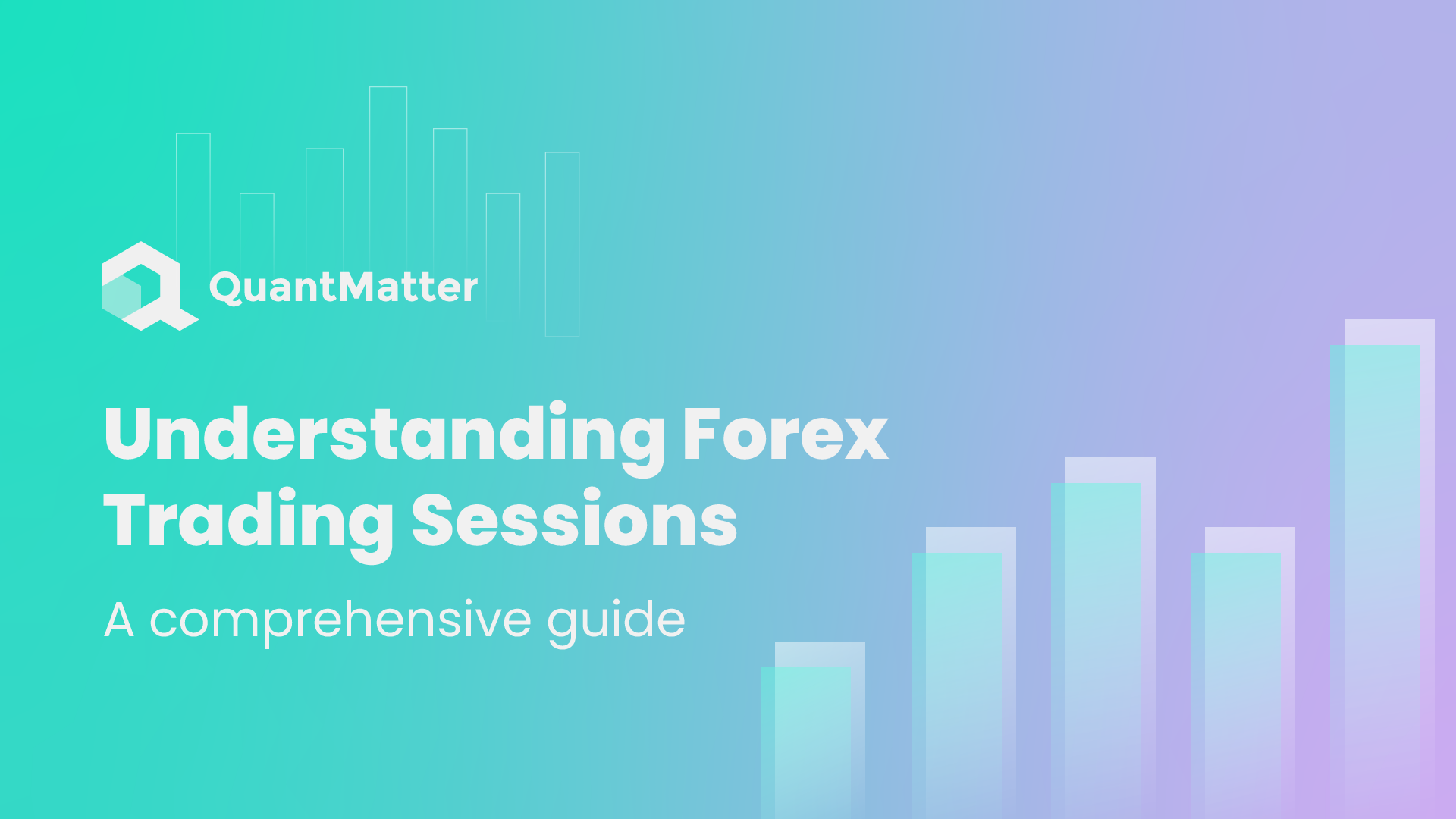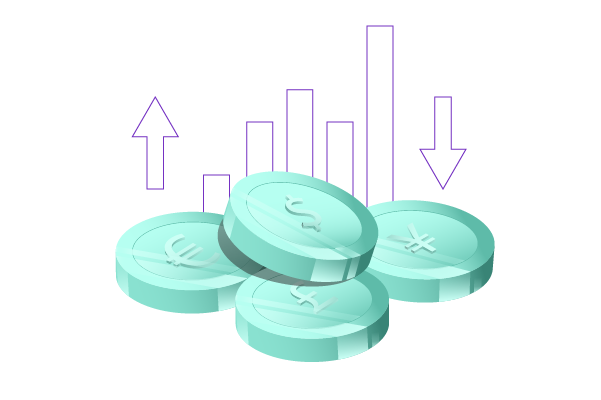
The abbreviated word forex is the epitomal or most significant market in the world in which currency is ceaselessly bought and sold. It is an ever-busy market that works for 24 hours a day, five days a week, which has become a stage where traders from different parts of the world can make profits.
The forex market trades in different sessions, each characterized by certain features of operation. They are not random but rather follow the sun as primary financial markets start and end their business in different time zones around the world. These primary trading sessions include the Sydney session, Tokyo session, London session, and New York session. The different flavors that characterize each session are shaped mainly by local financial events. This paper discusses different forex trading sessions, their importance, and when to do them.
The 4 Major Forex Trading Sessions

The foreign exchange (forex) is open 24 hours a day for business, five days a week, except holidays, which are divided into four trading main sessions, namely Sydney, Tokyo, London, and New York. The sessions are all distinctly different due to the varying nature of operations in each region. It’s important for a trader to understand how these sessions move in order to make the right decisions when entering and exiting the trade. Let’s delve deeper into each:
1. Sydney Session
The Sydney session, spanning 22:00 The day’s forex trading cycle commences between 00.00 and 07.00 GMT. Although it might be associated with low trading sessions volumes, its role precedes all other market movements. In these periods, intense attention is paid to the Australian and New Zealand markets.
Important cross-currencies such as AUD/USD, AUD/JPY and NZD/USD dominate this period. In this period, you have to familiarize yourself with antipodean currencies. Their upswings are what create the foundation on which trends in the larger global forex market will be built.
2. Tokyo Session
Following the dawn in Sydney, the Tokyo session steps into the limelight at 00:00 Unique dynamics in the forex market are introduced, with timings ranging from 00:00 to 09:00 GMT. A good number of traders usually consider this a relatively calm session, yet there are some moments of increased activity, especially when it concurs with the London session.
The part of the day involves key currency pairs like USD/JPY, EUR/JPY, and AUD/JPY. In addition, market sentiment is sometimes stirred by economic data released in Japanese, creating brief but significant levels of activity amidst serene conditions of trade. Therefore, during the Tokyo session, traders need to pay special attention to certain aspects of this information in order to predict future changes in the market, turning what seems quiet into strategic advantages.
3. London Session
As the sun ascends over Europe, the London session unfolds its wings from 08:00 Being the most traded and most liquid period of the FX market, it usually begins at 00:00 to 17:00 GMT. It is significant in itself, and it touches on foreign exchange trades across the world. In addition to the aforementioned market analysis on commodities, the key currency pairs that will be spot lighted are EUR/USD, GBP/USD, and EUR/GBP during the London session.
The unique feature here is that it overlaps with Tokyo’s as well as New York’s sessions, thus forming a peak in trading sessions volumes. The London market proves an attractive environment for traders who thrive on volatility, liquidity, and numerous chances. This period marks an important point for market stakeholders as they make key decisions that may travel worldwide.
4. New York Session
As the day approaches its twilight hours, the New York session emerges as the final act in the daily forex saga, operating from 13:00 to 22:00 GMT. This part enjoys increased trading sessions activities that overhang London’s session effect. These are some of the key currency pairs, which include USD/JPY, EUR/USD and GBP/USD.
With many trading sessions options, the NY session is quite volatile and highly liquid; hence, it offers numerous trade possibilities based on market movement. Participating in this meeting is not a child’s play because it comes as the culmination of foreign currency trade. It is the last chance for intelligent traders before going down and taking a rest before starting again in the Sydney session.
Factors Affecting Trading Sessions

The foreign exchange market is a highly mobile venue in which currencies get traded 24/7, split into different sessions of trade across the globe to ensure that no currency has the upper hand over the other. Traders hoping to maneuver through the market successfully should understand what drives such periods. Let’s delve deeper into the key elements that shape and define each trading sessions:
– Volatility
Volatility is like a double-edged sword for traders. However, it signals a chance to call for more market profitability in times of increased economic activity. Forward-looking sessions have higher volatility, which leads to more significant and fast movements, giving traders chances to take advantage of such changes. These moments are appealing to the fact that big profits might be earned, attracting various traders’ attention to the fast beat of the market.
Nevertheless, as is the case for any forceful influence, volatility needs an equal measure of reverence and carefulness. However, this is the other side of the coin, showing the inherent danger that comes with heightened market volatility. Price changes are often sudden and unforeseen, adding another dimension of vulnerability as trades can occur unexpectedly. Thus, it is important to take advantage of all the opportunities that volatility provides; however, this needs prudence and foresight.
– Currency Pairs
As such, the forex market facilitates trading sessions currency pairs, where every pair depicts its respective value. The currency pairs in focus are dictated by different trading sessions arising as a result of varying regional economic activities.
Therefore, the knowledge of traders about which pairs are traded actively in some sessions is necessary because it determines their actions. For example, in the case of Sydney’s session, the AUD/USD and NZD/USD are emphasized, which highlights how Australia and New Zealand impact these currencies’ movements. An understanding of these currency pairs in particular trading sessions is similar to the market language, which gives traders an edge in trading.
Also Read: Market Maker Options: Definition and How They Make Money
– Economic Data Releases
The main instruments on the financial calendar are economic data releases; each one has a high probability of moving the markets. The job figures, GDP statistics, and inflation rates all contribute to the movement of national currencies through their fluctuations as key indicators. Besides, there is a dimension of complexity due to what central banks, such as those dealing with interest rate settings, are up to.
Nevertheless, these instances are more than just awareness. They include the essential know-how concerning timing when selling the securities in the overall trading sessions periods. Foreign exchange operates throughout five days as opposed to twenty-four hours, and there is always some level of activity that varies across each session. The temporal angle in economic data releases is an added sophistication to a trading sessions toolbox.
– Overlapping Sessions
It is during the overlap of major trading sessions that the magic of the forex market usually takes place. Such overlapping times, like the confluence of the London and New York sessions, provide an amicable environment for augmented trading sessions and market shifts.
The 13:00 The period between 00 and 17:00 GMT is known for being one of the most traded. During these intervals, traders attempt to gain from the quick change of currency in the different currencies. Decoding the tangled choreography of the trading game is a complex process yet immensely rewarding for those who succeed.
Tips for Trading Forex Sessions

A well-informed, thorough knowledge of what constitutes different sessions in the forex market is vital for anyone interested in trading sessions the market. This ranges from various session features to what impacts market behavior. Knowledge of this is vital to ensuring that one makes intelligent decisions regarding what to trade. Let’s delve into some valuable tips to enhance your approach during forex trading sessions:
– Plan Your Trading Hours
Your trading hours dictate your success in coming up with a good forex trading sessions strategy. Understanding how the various trading sessions work, as well as adjusting your activities to fit those that are more suitable for you at that specific time, is extremely essential here. For example, for those who like a less crowded and tranquil environment, the Tokyo session can do just the trick because it is viewed as one of the quietest markets.
If you work well in the middle of turbulence, then the coincidence of both London and New York sessions could be your perfect fit as a trader. Adjusting your trading sessions hours enables you to interact with the market during its favorable moments, which makes it easy for you to plan effectively.
– Stay Informed
In forex, knowledge is power. Economic events, news, and geopolitics are important and one has to be kept abreast. Such factors usually have great impacts on currency prices and investors’ perceptions of the markets.
Such a trader knows what macroeconomic event is scheduled during his/her trading sessions and thus can plan appropriate actions in order to minimize a possible negative impact or maximize profit. Having additional knowledge of geopolitics enables one to go through the foreign exchange market with a clear picture of various factors. Keeping yourself updated ensures that you have information that is enough to help you make decisions as per the current scenario.
Also Read: Market Making: Strategies and Techniques (August 2023)
– Use Technical Analysis
Technical analysis is indeed one formidable weapon for traders to tackle trade situations at various session times. Traders can analyze the pricing chart and use some technical indicators to determine session specific properties.
Technical analysis helps in identifying trend patterns, using oscillators and moving averages to understand market behavior. These tools should help traders know the current attitude of the market towards some of their positions so they can make sound decisions based on their trading sessions plan.
– Risk Management
Look at stop-loss orders, one of the most powerful and straightforward instruments for risk control. These are protective orders that you provide in order to create a financial lifeboat, thereby protecting your capital against unforeseen and adverse changes in the market. Stop-loss order is an automatic exit-strategy for a position in the face of unpredictability such that it stops whenever a preset loss is achieved. Firstly, it is an act of prevention that avoids emotional decision making based on changes in the market, and it brings up a reasonable approach to protecting one’s money.
Nevertheless, the effectiveness of risk management outweighs the mere placement of stop-loss orders. It focuses on detailed knowledge of the individual risk involved in all separate trading sessions. There exist various trading sessions with differences in intensity across different time zones, which influence volatility changes in world forex. Being able to identify these temporal distinctions helps traders design custom made risk management tactics that fit the challenges provided by each trading session.
Conclusion
Successfully navigating through the forex market is the equivalent of skillfully playing a complicated symphony. In it are enlisted such notes as volatility, currency pairs, economic data releases and simultaneously acting sessions, each of which builds the tune from moment to moment, forming a dynamic music of money flows These traders should be aware that in order to play to the tune of global financial music, one will have to be agile in selecting the right tempo and pitch. Hence, it takes more than just learning the complex moves of the dance; you also need to put together an integrated and flexible strategy.
Successful Forex trading sessions are not easily achieved. Just as the skilled conductor of an orchestra requires a combination of efforts, planning the precision of your trading sessions hours is like the metronome, linking your activities to particular sessions suitable for your trading sessions style and risk appetite. Identifying particularities associated with each period, from the mellow beginning of Sydney’s session up to the peak moment in concurrent London and New York sessions
Knowledge of market influencers just as one listens intently to the different sounds emanating from the musical instruments. In the same manner, a trader should be sensitive to economic, news, and political matters taking place in the market during his/her chosen session, just like a musician who is receptive to subtle cues emanating from an instrument. This awareness becomes a tune that guides your trading sessions decisions so that they are in tune with the current market situation.
Disclaimer: The information provided by Quant Matter in this article is intended for general informational purposes and does not reflect the company’s opinion. It is not intended as investment advice or a recommendation. Readers are strongly advised to conduct their own thorough research and consult with a qualified financial advisor before making any financial decisions.

I craft stories that make complex ideas clear. I simplify the blend of data science, machine learning, and crypto trading, showcasing how advanced tech and quantitative models analyze data for informed trading choices. Join me in exploring the realm of quantitative trading, where my narratives make intricate concepts easy to grasp.
- Alifia Berizkyhttps://quantmatter.com/author/alifia-berizky/
- Alifia Berizkyhttps://quantmatter.com/author/alifia-berizky/
- Alifia Berizkyhttps://quantmatter.com/author/alifia-berizky/
- Alifia Berizkyhttps://quantmatter.com/author/alifia-berizky/
